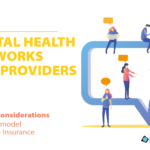The textbook risk management says that risks must be avoided and mitigated so that they do not turn into problems. But, like code merge, one cannot avoid assuming and facing risks that are not under one’s control. We must accept that we do not always have the capacity to control and, therefore, everything we do and experience has risk.
Accepting risk situations is essential to be able to manage them, since denying or minimizing them (a very human tendency, by the way) makes us trust and see ourselves already with the problem on top of us, unable to act or overwhelmed by the situation.
In the relationship with clients, the risks are infinite and of various types: technical, staff, unforeseen events… If we are not aware of everything that can go wrong and we approach the job with naivety, the plan could go wrong and we could fail to deliver.
In essence, risk management is:
- Identify risks, which are always present in all activities.
- Establish a priority, always attend to the most critical first.
- Employ mitigation measures (avoid the problem before it occurs).
- Contingency measures (what is our plan B, C or D?).

Now, from my experience, I will explain some formulas that I use when managing risks.
- Be pessimistic: you have to think about the points of failure. Put us in the worst case scenario so that, if it happens, we are not caught unawares.
- Be proactive: some risks can be eliminated if we work on them, otherwise they could blow up in our face.
- Keep calm: sometimes when the risk materializes, panic sets in and focus is lost.
- Focus on a target: set a key objective when risks materialize.
- Assuming risks: the greatest risk is usually lack of time, not having the material time to carry out the measures to contain the risk.
- Don’t let your guard down: when solving the problem the temptation is to fall into optimism instead of thinking about what else can go wrong.




